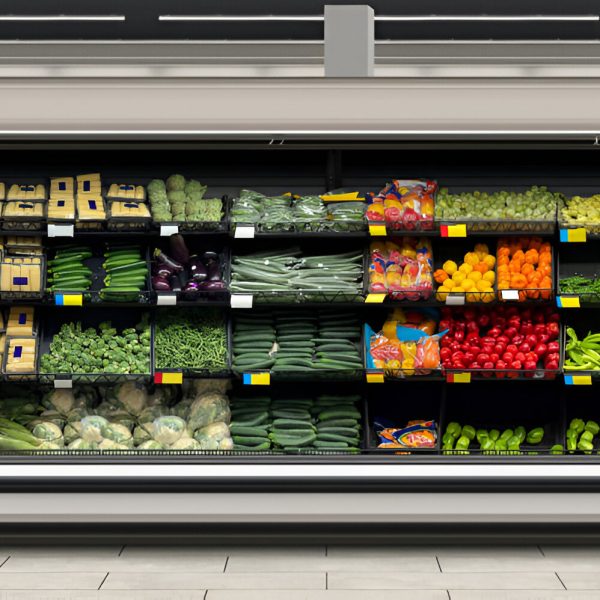In an industrial environment, maintaining organization and efficiency is crucial for the smooth operation of daily activities. Warehouses, factories, and manufacturing plants often deal with high volumes of products and materials that need to be quickly identified, tracked, and retrieved. One of the most important aspects of organizing an industrial space is ensuring that rack labels are durable, clear, and easy to read.
In industrial settings, where equipment, weather, and other environmental factors can impact label longevity, designing durable rack labels becomes a critical component of the operation. The right labels can prevent errors, reduce downtime, and ensure that workers can quickly locate and identify materials. This article explores how to design rack labels that are tough enough to withstand the harsh conditions typical in industrial environments.
Why Durability is Crucial in Industrial Rack Labeling
In industrial environments, rack labels must not only be functional but also durable enough to withstand tough conditions. From extreme temperatures and moisture to exposure to chemicals and physical wear, industrial environments can be brutal on labeling systems. Without durable labels, organizations can face issues such as:
- Faded or illegible labels that cause delays in locating materials.
- Peeling or damaged labels that result in incorrect inventory management.
- Increased downtime as workers attempt to find misplaced or damaged labels.
Durable rack labels ensure that labels remain intact and legible, regardless of environmental conditions. They help eliminate these issues, keeping operations running smoothly and minimizing the risk of errors that could affect productivity and safety.
Key Considerations for Designing Durable Rack Labels
When designing rack labels for industrial environments, several key considerations ensure that the labels stand the test of time. These include choosing the right materials, selecting the best printing method, and considering environmental factors that could impact the labels.
1. Material Selection
The material chosen for rack labels is one of the most critical factors in ensuring their durability. Industrial environments are often subject to high temperatures, moisture, dust, and chemicals. As such, labels made from materials like vinyl, polyester, or polypropylene are ideal choices for industrial rack labeling. These materials are resistant to wear and tear, able to withstand harsh conditions, and can be easily cleaned if needed.
- Vinyl: This material is waterproof, flexible, and resistant to UV rays, making it ideal for outdoor or semi-outdoor environments.
- Polyester: Known for its excellent durability, polyester labels are highly resistant to heat, chemicals, and abrasion. These labels are perfect for heavy-duty industrial applications.
- Polypropylene: This is another great option for industrial labeling, offering resistance to chemicals and moisture, as well as being tear-resistant.
2. Label Adhesive
The adhesive used in rack labels also plays a vital role in their performance. It’s important to choose an adhesive that can handle the temperature fluctuations, humidity, and rough handling common in industrial environments. Permanent adhesives are typically recommended for rack labels as they ensure that the labels stay in place throughout their lifespan.
For environments with extreme temperature fluctuations, choosing adhesives that can handle both low and high temperatures will ensure that the labels remain attached to the racks without peeling off. It’s also essential to consider the surface material of the racks, as certain adhesives may work better on metal, wood, or plastic.
3. Clear and Durable Printing
Printing is another crucial element in designing durable rack labels. High-quality printing ensures that the text, barcodes, and graphics on the labels are legible and will remain intact over time, even under harsh conditions. Thermal transfer printing is the most common method used for industrial rack labels because it produces high-resolution, durable prints that are resistant to smudging, scratching, and fading.
Thermal transfer printers use ribbons to transfer ink onto the label material, providing a long-lasting print that can stand up to chemicals, abrasions, and exposure to UV light. The combination of a durable label material and the thermal transfer method ensures that the print remains crisp and readable.
4. UV and Chemical Resistance
In industrial environments, racks and storage areas are often exposed to chemicals, cleaning agents, and UV light. Exposure to these elements can cause labels to degrade, making them unreadable. To ensure the longevity of rack labels, it’s essential to select materials that offer resistance to these factors.
- UV resistance: Labels that are exposed to sunlight or harsh artificial lighting should have UV-resistant coatings to prevent fading and degradation.
- Chemical resistance: In environments where labels may come into contact with oils, solvents, or other chemicals, it’s important to use materials that can resist damage from these substances.
5. Size and Visibility
The design and size of rack labels also play an important role in their effectiveness. Labels should be large enough to be clearly visible from a distance but not so large that they interfere with other parts of the rack or warehouse layout. Bold, easy-to-read fonts and high-contrast colors will make labels more visible, helping workers locate racks quickly and accurately.
In addition to readability, it’s important to standardize the layout and design of labels throughout the warehouse to prevent confusion. Consistent label designs improve the speed and accuracy with which workers identify items.
Advanced Features for Industrial Rack Labels
As warehouse technologies evolve, new advancements in rack label designs continue to improve their functionality and durability. Adding advanced features to rack labels can further enhance warehouse efficiency and accuracy:
1. Barcodes and QR Codes
Integrating barcodes or QR codes into rack labels enables warehouse workers to scan and track inventory in real time. This automated process ensures more accurate inventory management and helps reduce human errors during order picking and restocking.
- Barcodes: Scanning barcodes makes it easier to identify products and update inventory levels quickly, reducing the time spent on manual data entry.
- QR Codes: QR codes can store more data and direct workers to digital documents or additional information about the product, making them especially useful for managing complex or hazardous materials.
2. RFID Technology
For even more advanced tracking, Radio Frequency Identification (RFID) technology can be embedded into rack labels. RFID tags store data that can be read wirelessly, which speeds up inventory checks and allows for continuous tracking of products within the warehouse. RFID labels are perfect for large warehouses where quick identification and tracking of items are essential.
3. Color-Coding Systems
Implementing color-coded labels can help improve the efficiency of warehouse operations. Color-coding can quickly indicate product types, storage conditions, or urgency levels, helping warehouse workers sort and prioritize tasks with minimal confusion. Color-coded rack labels reduce the chances of errors by providing visual cues that are easy to understand at a glance.
Best Practices for Maintaining Durable Rack Labels
Even the most durable rack labels require proper care and maintenance to ensure their longevity. Here are a few best practices to help keep your labels intact:
- Regular Inspections: Periodically inspect rack labels to ensure they are still legible and securely attached to the racks. Replace any damaged or faded labels promptly.
- Clean Labels: Keep labels clean by wiping them down regularly, especially if they are exposed to grease, dust, or dirt. Use non-abrasive cleaning solutions to avoid damaging the labels.
- Update Labels: As inventory changes or the warehouse layout evolves, make sure to update the rack labels to reflect new storage locations or product information.
FAQs
What materials are best for rack labels in industrial environments?
Durable materials like vinyl, polyester, and polypropylene are ideal for industrial environments due to their resistance to heat, moisture, and chemicals.
How can barcodes enhance the effectiveness of rack labels?
Barcodes enable quick scanning of products, reducing human error and speeding up inventory management. They can be integrated into rack labels to improve accuracy and efficiency.
How do I ensure that rack labels remain intact in harsh conditions?
Choose high-quality materials, use durable adhesives, and ensure that the labels are printed using thermal transfer technology for long-lasting readability.
Can color-coded rack labels improve warehouse operations?
Yes, color-coding provides quick visual cues that help warehouse workers sort products and prioritize tasks more efficiently, reducing errors and speeding up operations.




No comments yet.